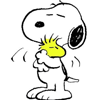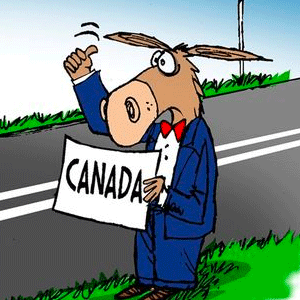My Pet World: Best books to give to your pet loving friends
Pet lovers enjoy reading about their pets, and these choices can make great holiday gifts. While some books are entertaining, others can be very helpful for pet owners.
"Simon's Cat: Off to the Vet and Other Cat-astrophes," by Simon Tofield (Akashic Books, Edinburgh, England, 2015; $27.95). With more than 600 million YouTube views, Simon's cat is equally as entertaining in print. Guaranteed laugh out loud material, Tofield's secret is successfully relating Simon's cat to any cat. Simon's cat is certainly the Snoopy of the cat world. While the name of the book is "Off to the Vet," many of the cartoon panels are in other settings (such as Simon's cat taunting an old geyser neighbor), but the funniest cartoons of all are getting to the vet clinic, and at the clinic. Well, funny for us, not so much for Simon's Cat.
"Catify to Satisfy," by Jackson Galaxy and Kate Benjamin (Penguin Random House, New York, NY, 2015; $21.95). The Animal Planet Star (Galaxy) and Benjamin (from www.housepanther.com) use their creative juices to offer up ideas to "cafity" homes. Stuck indoors is a good thing for cats because life is safer than outside. However, many cats live a dull life. Galaxy and Benjamin offer ideas to spice up your home: From home improvement projects to benefit cats, to building out catios (patios for cats), to constructing ways to keep canines out of the litter box to installing platforms and ledges.
"Reporting for Duty: True Stories of Wounded Veterans and Their Service Dogs," by Tracy Libby (i-5 Press, Irvine, CA, 2015; $29.95). If you aren't already angry about the U.S. Veterans Administration withdrawing their support for pairing service dogs to veterans with post-traumatic stress disorder, you'll be infuriated after reading this book. "Reporting for Duty" is beautifully compelling in so many ways. The images clearly illustrate what dogs are doing for America's veterans of all ages. Lives have been saved. Affording each veteran appropriate respect, Libby does a superb job of telling their stories.
"Heal: The Vital Role of Dogs in the Search for Cancer Cures," by Arlene Weintraub (ECW Press, Toronto, Ontario, Canada, 2015; $16.95). This is a serious book for the holidays, but it offers an incredibly important report and update on who veterinarians and human medical researchers are working with to find treatments for cancers. "Heal" examines how dogs have been trained to detect various cancers, but now what? How can these talents be practically be utilized? Also, how one cancer drug has come on the market, one version to help dogs (Palladia) and another for people (Sutent). Tragically, while writing this book, the author's sister died of gastric cancer. This book is science, emotion and love of dogs all mixed together.
"The Dog Behavior Problem Solver," by Teoti Anderson (i-5 Press, Irvine CA, 2015; $19.95). The first chapter is incredibly important, "What is a behavior problem and what causes it?" It seems obvious, but you can't identify a problem behavior unless you first understand what normal behavior is. Also, the cause of the problem is so often misunderstood. Most important, is her easy to follow advice on how to solve problems; Anderson relies on positive reinforcement. The book covers 21 "problems," from aggression to whining.
"All Dogs Go To Kevin: Everything Three Dogs Taught Me (That I Didn't Learn in Veterinary School)," by Dr. Jessica Vogelsand (Grand Central Publishing, New York, NY, 2015; $26). Publisher's Weekly compared the author's style to James Herriot, high praise indeed. And I can see why. Vogelsand is a wonderfully sweet storyteller. Vogelsang concedes she's sometimes better at relating to dogs compared to people. Much of the book also reads like Vogelsang's own memoir, and one worth reading.
"A Ruff Road Home: The Court Case Dogs of Chicago," by Susan Russell, photography by Josh Feeney (Safe Humane Publishing, Chicago, 2015; $55). Based on a principle that a humane community is safer, Safe Humane Chicago is an innovative organization that was founded to make communities safer by reducing violence for children and companion animals. One of their efforts is to find homes for court case dogs. These are dogs doing the time languishing at animal control (for reasons varying from themselves being abused to dogs used in dog fights), but have not committed a crime. Why shouldn't these dogs (mostly pitbull-type dogs, but one cat is included in the book) be adopted if their temperament is suitable. Safe Humane is the only program like this in America. Safe Humane also provides various types of community education. The entire proceeds benefit this nonprofit. Book is only available at www.safehumane.org.
"Holy cow!: Doggerel, Catnaps, Scapegoats, Foxtrots, and Horse Feathers -- Splendid Animal Words and Phrases," by Boze Hadleigh (Skyhorse Publishing, New York, NY, 2015; $14.99). So what do all these splendid phrases mean? Horse feathers apparently come from the expletive horse (then you fill in the rest). As the phrase was becoming common in the 1920s, it became more well-known when the Marx Brothers released a movie by the same name in 1932. Of course, a flying horse (horse with feathers) dates way back to Pegasus the flying horse of Greek mythology. Other expressions, which the author explains, include 'cat's pajamas,' 'raining cats and dogs,' 'hush puppies,' and 'bringing home the bacon.' My only complaint is lack of a detailed table of contents -- if you want to find a specific expression it takes some looking for.
(c) 2015 DISTRIBUTED BY TRIBUNE MEDIA SERVICES, INC.






